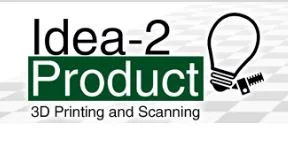Studying Media Literacy in College Students
For my thesis, I decided to combine the two fields I was studying, Biology and Journalism, to tackle a question that had been widely publicized at the time due to politics and social concern. Fake news was ruling the news cycle and throwing doubt on our agencies of truth, the media. College students and “millennial” as well as younger generations were being blamed for consuming and spreading misinformation through allowing false reports to circulate and not fact-checking articles before believing them or sharing them with others.
To test this myth, I put together a survey based on a study done by Stanford that found that college, high school and middle school students could not appropriately point out the difference between fake and real news based on information given to them. I found their study to be problematic, due to the researchers self-sorting students into groups of varying levels of media literacy based on written responses only, their vague rubrics that allowed the interpretation of the answers to be left to individual reviewers, the fact that they did not count people who were unsure as media literate, despite showing critical thinking about their answers, and they did not include actual articles, just headlines, which did not give individuals enough context clues to make rational decisions.
For my experiment, I used their primary foundation, including a website entry page and a viral photo with a caption to see if, based on the limited information given, the students could tell what was real news, what was sponsored content, what was an advertisement, and what was fake news. I also expanded on their original idea to add two full articles, both of which were fabricated by me based on either a real event or a fake news event, to see if they could tell the difference with more context. We also wrote negative and positive comment sections that switched places for every viewer to be matched with an article at random to see if positive or negative feedback to an article changed their mind on it’s validity, independent of the article content itself. We then collected the data from over 300 participants and used them to compare overall whether the general population was right or wrong in their assumptions, as well as compared Liberal Arts to STEM majors to see if discipline played a factor in media literacy.
Our results were that colleges students can correctly identify real news from fake news the majority of the time, and that they can also correctly identify which paid-content, such as advertising and sponsored articles, from legitimate news. We also found that the comment sections did not sway students the majority of the time. When looking at disciplines, there is not a statistically significant difference between STEM and Liberal Arts students when it comes to media literacy, though minor trends could be identified depending on the type of media, and students with both degrees often fared better than their single-discipline counterparts. Below you will find my written thesis, as well as my findings in presentation format.




![image-asset[1].jpeg](https://images.squarespace-cdn.com/content/v1/5efc2826c1fdd5133069d63b/1618114995934-8MEPTD5NNNMOD7SEG30E/image-asset%5B1%5D.jpeg)
![report[1].JPG](https://images.squarespace-cdn.com/content/v1/5efc2826c1fdd5133069d63b/1618115025606-59DKBY8X8O2NXUQNLU57/report%5B1%5D.JPG)






